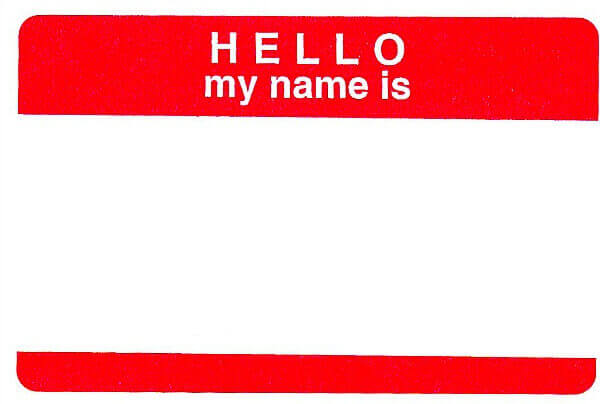
Does Your Content Suffer from an Identity Crisis?
5 min readIt’s human nature to want to fit in. In our day-to-day lives, we’re constantly trying to fit our ideals and personalities into the little sub-groups that society has built for us. We want to be comfortable among our fellow humans, to be regarded as “one of the guys or gals.” But this attitude also pervades the Internet content world. It’s easy to go with the flow when it comes to creating web content. You can simply pick a title that makes sense for your needs, check what other people have done, and make your ideas just different enough to pass a Copyscape check and not inspire the wrath of the duplicate content gods.
But while I’m not suggesting that you show up to your next parent-teacher conference meeting in a cape and top-hat for the mere sake of looking different, it is important to set your content apart from the rest. To bring new and unique ideas to an Internet sadly lacking them. If your content is suffering from an identity crisis, perhaps it’s time to consider your own.
Consider for a moment that you have an assignment to write an article called Wireless Broadband Internet Providers. Obviously, your client wants the article to be a valuable resource for website readers, but there’s also some implied SEO going on. Your first instinct will probably be fairly typical — maybe provide a short, boring history of whatever you can find in the Wikipedia article on Internet companies, followed by some equally boring sections like “How to Choose a Wireless Broadband Internet Provider” and “Wireless Internet Providers and You.”
When you’ve finished writing, the article probably won’t look anything like the one I linked above. Instead, it will more resemble another submission to something like Ezine or ArticlesBase — content that no human is ever meant to read, and no search engine may ever index. In looking back on what went wrong, you might be tempted to start with the title of the article. Maybe the topic itself is too boring? Should it have a snappier, more journalistic feel? Maybe you should figure out the CSS to make it appear in Comic Sans font.
In truth, the title doesn’t have all that much to do with the problem. Titles work a great deal like subheads — they should be clear in what information they offer, not necessarily creative. In fact, overly ambitious titles can obscure your message to the point that few people will be interested in the content, and the majority of readers duped into clicking your title might bounce off the page straight away. Without your title getting too long, you must follow these simple rules:
- Satisfy any SEO requirements. If you’re writing an article to target a keyword phrase, it has to be in the title.
- Don’t get too cute. Nobody knows that you’re talking about if you write the title “Your iPad Unplugged – A Wireless Tale: Reloaded”
- Be specific. Even the title “Wireless Broadband Internet Providers” can be more specific by promising to answer a specific question – who, what, where, when, why, how?
Giving Your Content a New Identity
One of the first steps to creating content that stands out from the rest is to carefully consider your audience. If you are writing for a techie crowd, they’ll have certain expectations that you’ll need to fulfill. Your content will need to be brief and to the point, but it will also need to address some of their common expectations. For example:
- You might include a small widget to help sort lots of information into a simple tool.
- Make friends with bulleted lists and step-by-step instructions.
- Keep your language as simple as possible — don’t worry about not ending sentences with prepositions, for example.
- Organize your content clearly under multiple, descriptive subheads.
The University of Maryland University College (who obviously wanted to be as specific as possible when naming their college) offers some good advice on addressing an audience, creating an audience profile, and thinking about content purpose in their Online Guide to Writing and Research. Among their best tips, they recommend:
- Identify your target audience
- Think about how you expect your readers to use your content
- Cover any possible multicultural considerations
- Address the audience’s attitude coming into the article, and their likely reaction leaving it
After you’ve decided your audience and purpose for the article, your challenge is to create a thoughtful, valuable, and important piece of content that readers will at least enjoy, and at best think of as an authority piece — a valuable resource for the topic. Rather than copying what every other writer has done with the same sort of article, give the topic a fresh perspective.
- Start with an interesting story (no more than a few sentences) and try to relate the topic to your audience. Ask yourself why your readers should care about the topic.
- Write from a position of authority. Even if you don’t know what you’re talking about, pretend like you do.
- Write logically, starting with the most important information and working your way down.
- Keep everything simple. Most readers will scan the content anyway — so get your most important message across right away.
- Don’t try to include every piece of information on the topic you can find. Just give the readers a short and sweet look at your topic from a fresh viewpoint.
- Don’t write a college term paper – they’re boring to read and boring to write.
If you consider your audience and purpose, you’re 90% of the way there with writing a piece of content that stands out from your competitors. You might target a smaller audience than you would with a general “every basic thing about this topic” article. The audience you do target, however, will be more engaged with your writing, more interested in what you have to say, and will be hungry for more. And trust me, when your content begins to appeal to a more engaged and selective audience, it will soon be your competitors struggling to find their identities.




